I had intended to publish a different post, however work and other commitments have slowed down research, so for today, a brief post on one of the design and construction wonders of London. For a number of years, the London Transport Museum under their Hidden London brand have run a fascinating series of tours of those parts of the underground network that you do not usually see.
Last year, a new station was added to the list of tours – Piccadilly Circus – and as usual, it is fascinating to get a glimpse of some of the infrastructure and tunnels hidden behind the tunnels now in general use. These tunnels show how stations have developed over time, and this was the focus of the Piccadilly Circus tour, not a long tour in terms of the area covered, but a tour packed full of information.
Leaving the public areas of Piccadilly Circus, and a new set of tunnels appear, dating from the first incarnation of the station:
The original Piccadilly Circus station opened in 1906, however due to the station’s central West End location, the volume of people using the station grew rapidly. In 1907, 1.5 million passengers were using the station annually, and by 1922 this had risen to 18 million, and passenger numbers were expected to continue growing.
The original station was too small, and making small changes to the station would not support the growing numbers of people using the station. Lifts were a distance from the platforms and lifts really needed to be replaced by escalators, larger entrances were required along with a larger ticket hall.
There was considerable development in the area, including the redevelopment of many of the buildings along Regent Street where existing buildings would be replaced by six storey buildings. The need for a larger station was urgent.
The original plan was for a new domed ticket hall below Eros / the Shaftesbury Memorial, however the final scheme went for a new flat roofed ticket hall surrounded by an oval shaped passage which provided access to the stairs leading up to the street entrances. The station would broadly follow the dimensions of Piccadilly Circus above ground.
New banks of escalators would be installed between the ticket hall and an intermediate landing, with further escalators leading down to the Bakerloo and Piccadilly lines. It would be a major engineering and construction project.
To facilitate the work, the statue of Eros and the Shaftesbury Memorial were moved to the Victoria Embankment Gardens, and a construction shaft was sunk.
One of the major problems with such a large construction site in the centre of the West End was the amount of services that were buried below the surface, in the way of the new station. These had to be diverted away from the site, or transferred into a 12ft diameter pipe that had been installed around the circumference of the new station.
The new station was opened on the 10th December 1928, by the Mayor of Westminster, with the first public users of the station being given access later that afternoon.
The original station was closed on the 21st July 1929 and Eros / the Shaftesbury Memorial was returned to sit above the new station, on the 27th December 1931.
The considerably enlarged ticket hall and the new Otis escalators provided a Piccadilly Circus station that was ready to support the numbers of passengers using the station as London entered the 1930s, and for many years to come.
Escalators had replaced the original lifts, however walking the tunnels today, we can still see the direction signs and the original lift shafts.
Looking up one of the original lift shafts:
To the trains signs still point to where early 20th century passengers would have walked to get down to the platforms.
In a disused underground tunnel it is always intriguing to wonder just what is after that curve in the tunnel:
Although the new tunnels and escalators provide access from the ticket hall down to the platforms, the old tunnels still provide a very useful purpose. In an environment where space is at a premium, having areas available to store equipment is valuable.
The tunnels explored in the tour provide a reminder of how London’s underground system has grown, and the major construction works needed to continually support the growth in passenger numbers.
The tunnels are a step back to the original Edwardian Station, but perhaps the best place to admire Piccadilly Circus station is in the passageway surrounding the ticket hall. Piccadilly Circus was seen as the “hub of Emprire”, and as such needed a design, and quality building and decorative materials to match.
Charles Holden was responsible for the design of the station, and his distinctive style can be seen across the station. The passageway surrounding the ticket hall and the central concourse are clad in cream travertine marble. Decorative pillars and lights are roughly equally spaced around the oval passageway. Their relatively narrow form ensures maximum space is available for passengers walking between surface and the escalators through the ticket hall.
The ticket hall was restored in 1989, and in 2016, on the 75th anniversary of his death, a commemoration of Frank Pick was installed. Frank Pick was the Managing Director of London Underground in the 1920s, and was responsible for commissioning architects and designers such as Charles Holden.
The design of the memorial by Ben Langlands and Nikki Bell used words from one of Frank Pick’s lectures which highlighted his approach to design, and that good design contributes significantly to the quality of life in the city.
A very unusual feature in Piccadilly Circus station that dates back to the reconstruction of the station is a world map. The central dark band scrolls across the map to show the local time in the different time zones across the world. The location of the map here in Piccadilly Circus emphasised the view of the station at the time as the “hub of Empire”.
Too often we rush through London’s underground stations, trying to get as quickly as possible between the train and the street, and not taking the time to appreciate the design, engineering and construction wonders that we pass through.
The Hidden London tours provide the perfect opportunity to step back, explore the old tunnels and appreciate the effort that has gone into building a transport system we probably take too much for granted.

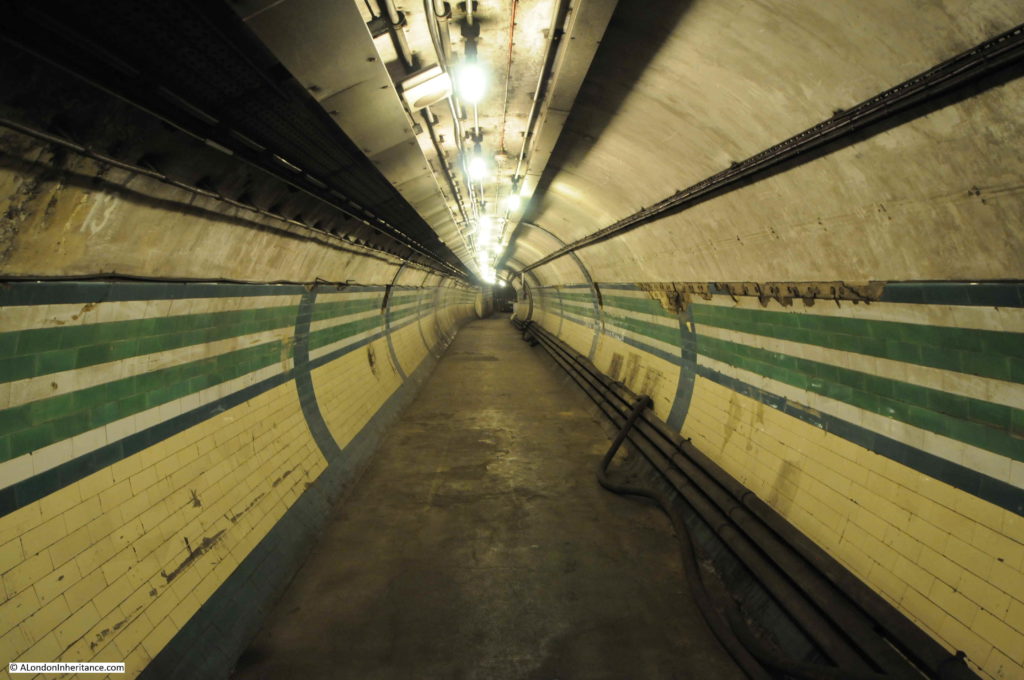
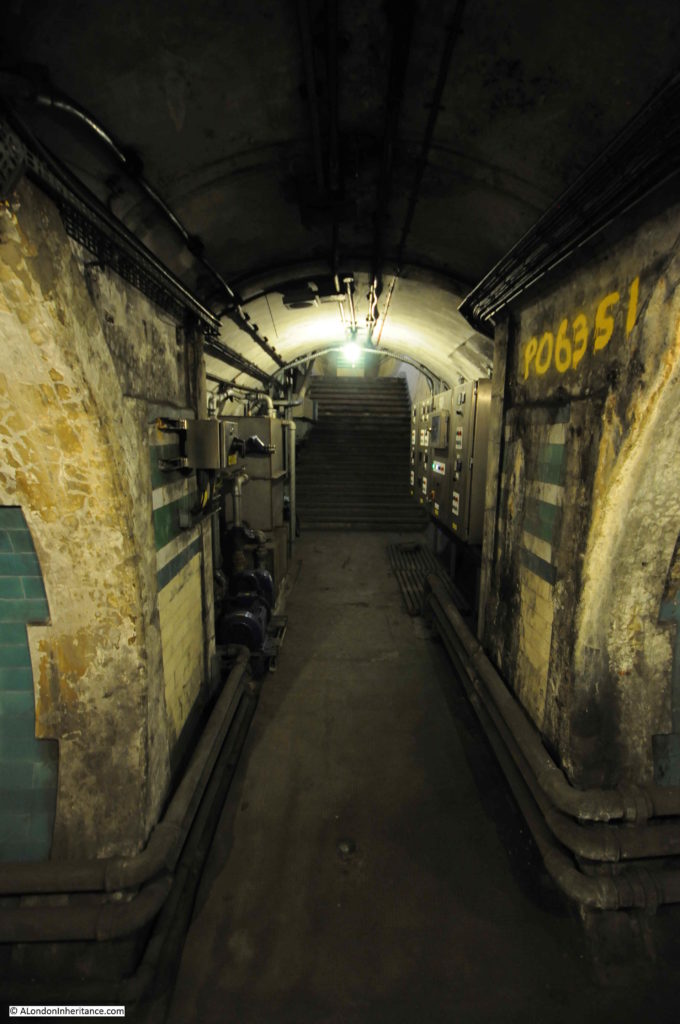
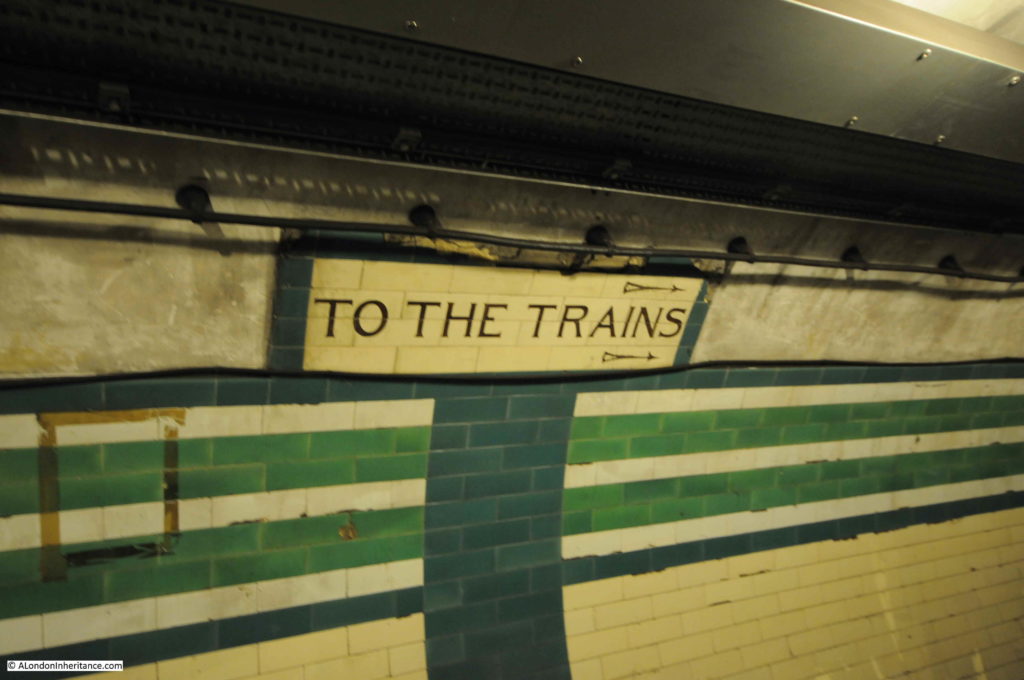
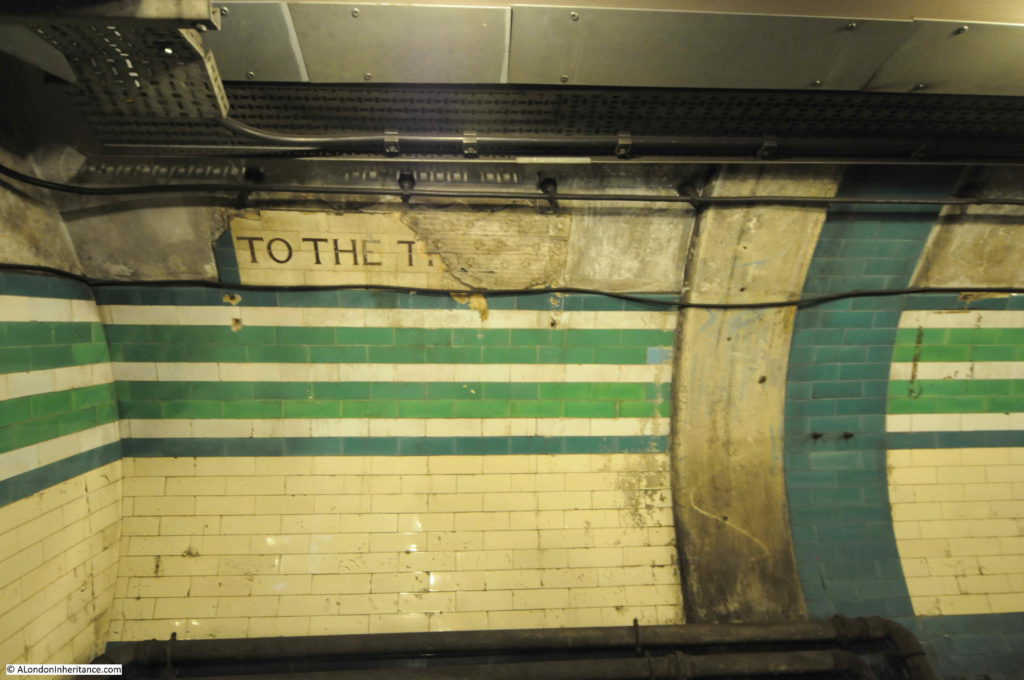

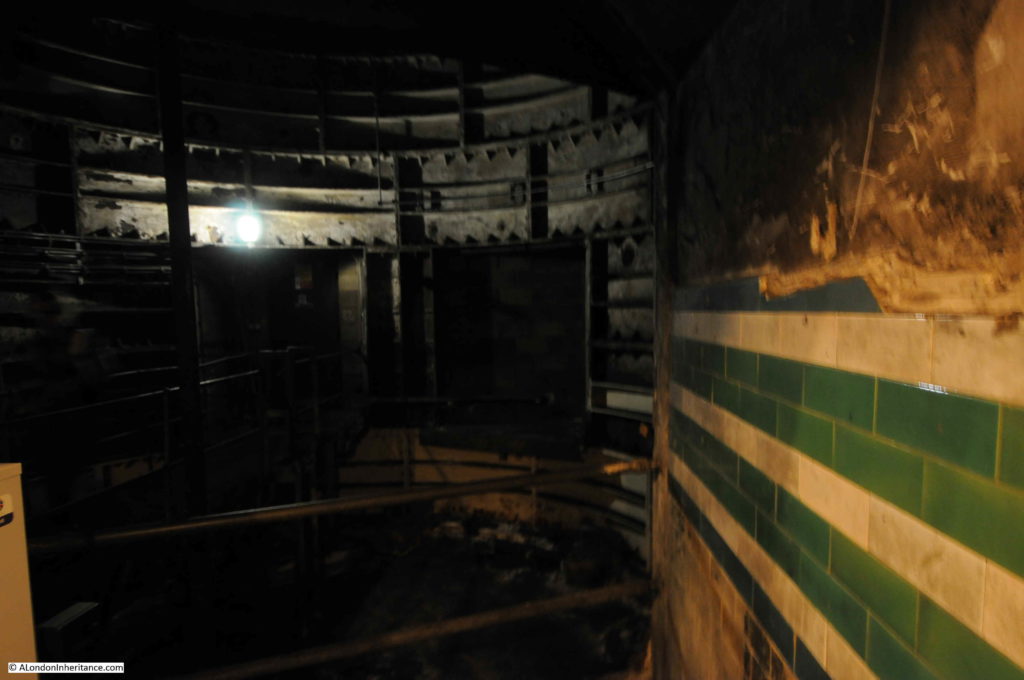




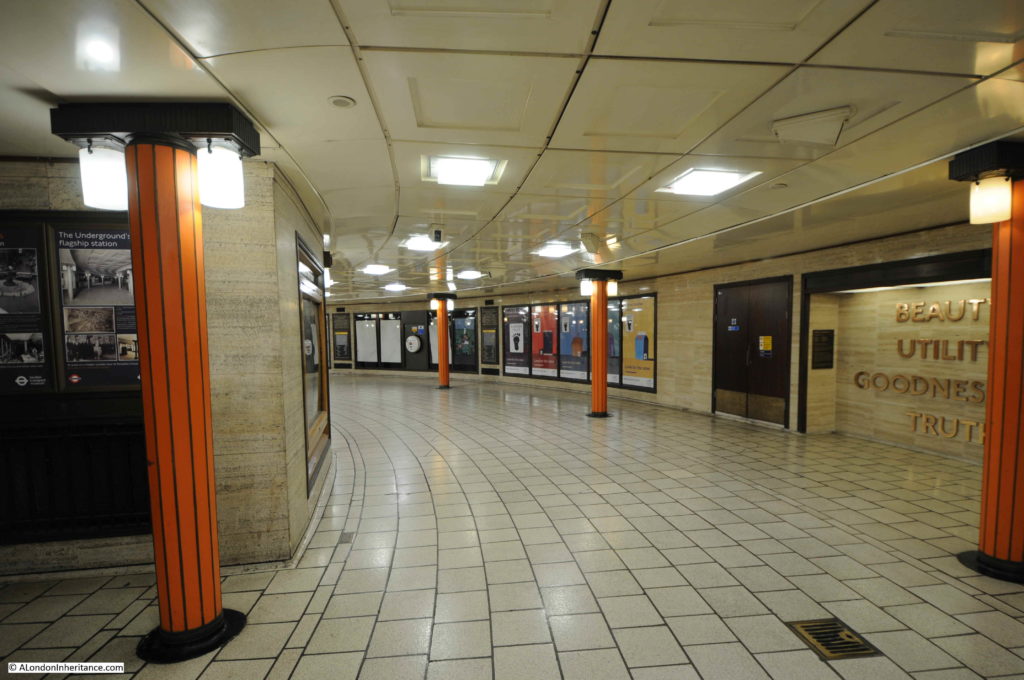

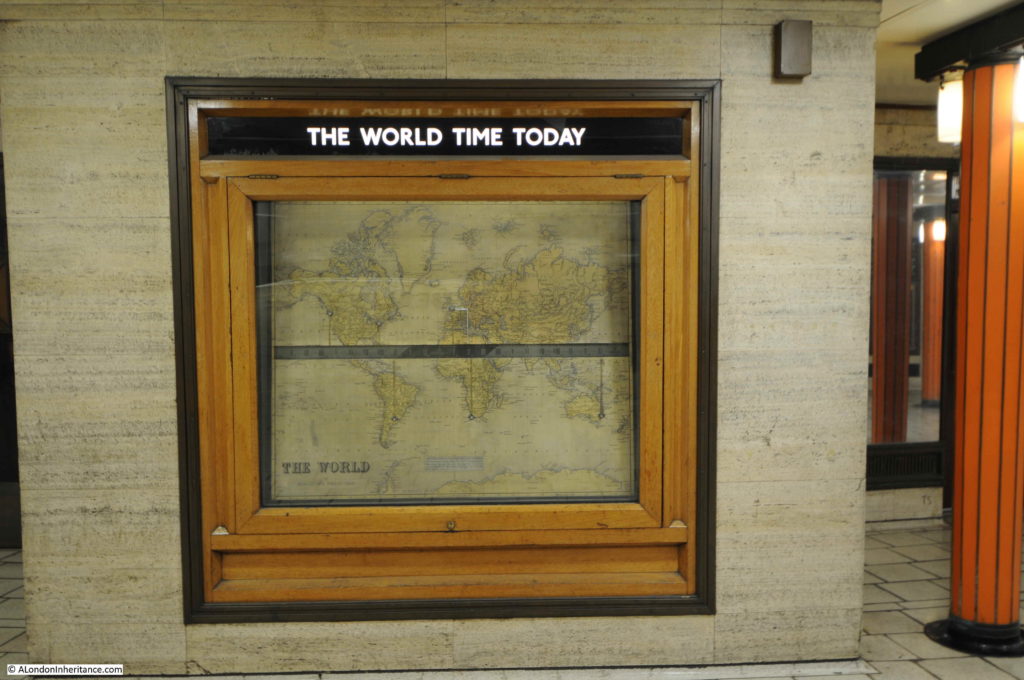
These tours sounds fascinating but they are v spendy!
It is such a beautiful station. And the little arrows to help you find the trains! As someone who vividly recalls using the wooden escalators in their last days, the insanely comfy trains that travelled the Metropolitan line and also the madness of the smoking carriages, this was a joy. Thanks for the trip.
The World Map is currently languishing and deteriorating, unloved, uncared for, and basically not working. Recently I have tried many times to persuade the Station Manager and the TfL Heritage Manager to try and get it restored by Steve Fletcher the horologist on the BBC’s The Repair Shop prgramme. This programme has become one of the most popular t.v restoration programmes ever. The BBC even pays for the repairs!! However TfL has too much inertia. No-one from TfL bothered to contact me in reponse to my emails. And TfL’s excuse for not restoring the clock is that there is no money for that kind of thing. As I said the BBC would likely pay. But frankly no-one at TfL really wants to know. I even tried the Museum but they said such a heritage item was nothing to do with them. I have now given up trying to get anyone interested.
Chris, your comments here and the article have inspired me to write The Repair Shop directly to see if they might exert more influence on TfL. We shall see!
Cheers,
Another Chris
I have a newspaper cutting, from the Daily Dispatch dated Saturday 12th September 1942, which announces that ‘ two of London’s eight new deep shelters, tunnelled below tube stations, are ready to be opened. The others will be completed for the winter’. There is a photograph of ‘London’s latest deep shelter’ which will provide ‘security for 6,500 persons, with canteen, recreation space, sick bay and isolation ward’.
I am wondering if any of these tunnels could be the ones seen on Chris Packham’s recent TV programme about an overpopulated world, which shows vegetables being grown in artificial conditions beneath the streets – of London I think.
Clapham common deep tunnels
In fact it’s just been on “Yesterday” in the underground worlds series entitled kingdom of salt
What more can I say?
Fri 28th February 2020 at 1940hrs.
Used this station many times in the 1970`s.
Thank you for the historical insight.
Thanks for another great article. In the 1950sand early sixtiesMy farther used to take me on walking tours of London, usually on a Sunday morning , when all was silent and misty. I now take great pleasure in showing friends, from my host country of Australia, around the hidden history of London. Your articles are a fantastic, thanks for your hours of hard work, they are much appreciated.
Martin
Another great trip -thanks
The old-fashioned way to get things like a clock repair done was a letter ti The Times. Perhaps all of us should comment to a staff member about it when we visit the station. I shall certainly look out for it now.
The Piccadilly Circus station is one of my favourites. Many thanks for this informative article.
Superb report.
As a little lad in the 50’s a visit to Piccadilly Circus tube station was almost like a trip to a SciFi scene. The circular layout of the station concourse the hustle and bustle of central London was so exciting to experience and all for the price of a ticket from my station, Manor House (Charles Holden, 1932) also on the Piccadilly line
The Piccadilly line I considered had the most ‘modern’, best and eye-catching stations.
Like Manor House the ticket office was sub-surface.
The new Piccadilly Circus station (Charles Holden, 1928) was modern, clean and brightly lit and so unlike many of the old gloomy other tube lines I’d traveled on.
At Piccadilly Circus there were many things to look at. The people, the automatic ticket machines and for me the ‘Train Interval Indicator’.
Set into the spotless cream tiled wall, a series of black and brass instruments that recorded the arrival on circular paper charts the comings and goings of the trains below me. I was mesmerized by the beauty of the instruments, the precision and information.
(Later I would serve a five year apprenticeship as an electrical instrument maker in London).
I understand that there is a similar instrument at 55 Broadway the LU HQ.
Sorry to shatter your memories but the internal walls around the concourse at Piccadilly Circus station were and are clad with Travertine marble and not cream tiles. Cream tiles were not a feature of Holden-designed stations before 1936 and as you rightly say, Piccadilly Circus was opened in 1928.
My very personal description was from memory and may not be correct as designed or built.
In my comment I used the term ‘cream’ tiles as an innocent childhood impression. I wrote what I saw at the time. It was not meant as an architectural statement.
No worries, Roy. I didn’t take it as an architectural statement. I just thought you might be interested.
On another note, it will be interesting to see what happens to the headway clocks at 55 Broadway now that the building is no longer the headquarters of LU. You may recall that they were on a through route from Broadway to St James’s Park station (which was subsequently closed to the public). I believe that under the current plans, this area is to be re-opened but the clocks haven’t worked for many years.
Another fascinating report on a very interesting part of London. You may be interested to know that a full size model of the new Piccadilly Circus concourse was constructed to ensure the finished structures all worked as planned.
By the way, Frank Pick was not MD of London Underground, which is a late 20th century invention. In his day it was the Underground Electric Railways Company of London. After 1933, when the London Passenger Transport Board was formed, he became it’s company secretary.
Out of curiosity, what happened to the full sized Piccadilly Circus model?
There is no record. From the photo I have seen it was of timber construction and was set up at Earls Court exhibition centre. I can only guess that it was dismantled and the timber re-used.
I was lucky enough to do this tour in December. The small group of a dozen if us were led down the caged emergency stairs into another world. The size of the fans! The dust! The sudden perceptible curtain of cold air! The list goes on. The guide was great: you could tell he had oodles of info to impart but kept it concise and therefore all the more entertaining. Recommend highly.